Hi friend,
As promised in part 1(visiting Sangla and Chitkul), here I am with the 2nd part of the travel story.

(for details of this photo, read up to last part)
Reaching Nako
Distances are fun when there is beauty all around you, and it becomes a thrill as well, when there are some dangers involved. Distance from Sangla to Nako village was quite a long one given that we started at around 3:40 PM on 12th July from Sangla and we had to cover about 130 kilometers of the half tarmacked and half dusty and pebble road.
Moreover, one has to constantly fear the shooting stones. Shooting stones are the stones which fall from the upside slope of the mountain onto the road with a speed. The reason is that there are no trees and the soil is silty and sandy- an avid evidence of the Tethys sea from the past.
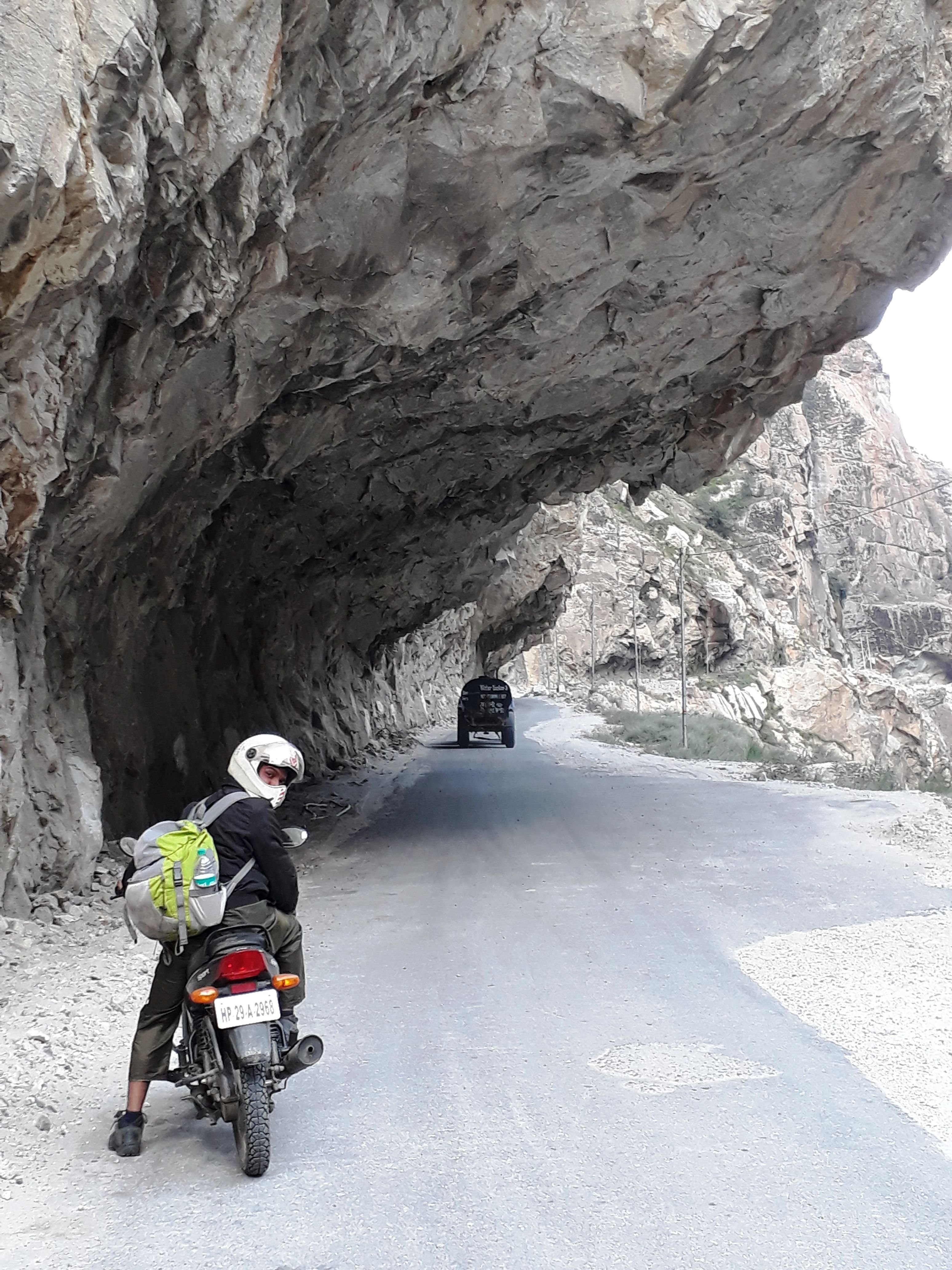
The road alternated its color from the tarmacked to dusty, and I had to keep my eyes both at the road and the upsides slopes. Anyway it was adventure, and I found that I was a good biker. Whenever a potential-pain-in-the-ass-pothole would come, I would pull up my ass in the air.
When we were on the NH-5 just below Pooh, the night had spilled its colors. The journey up to Nako village took about another 1.5 hours. We were in total darkness with no traces of any kind of life. Clouds had curtained the stars and sprinkled the cold water but in insignificant amount. Here is what google map shows about the route.
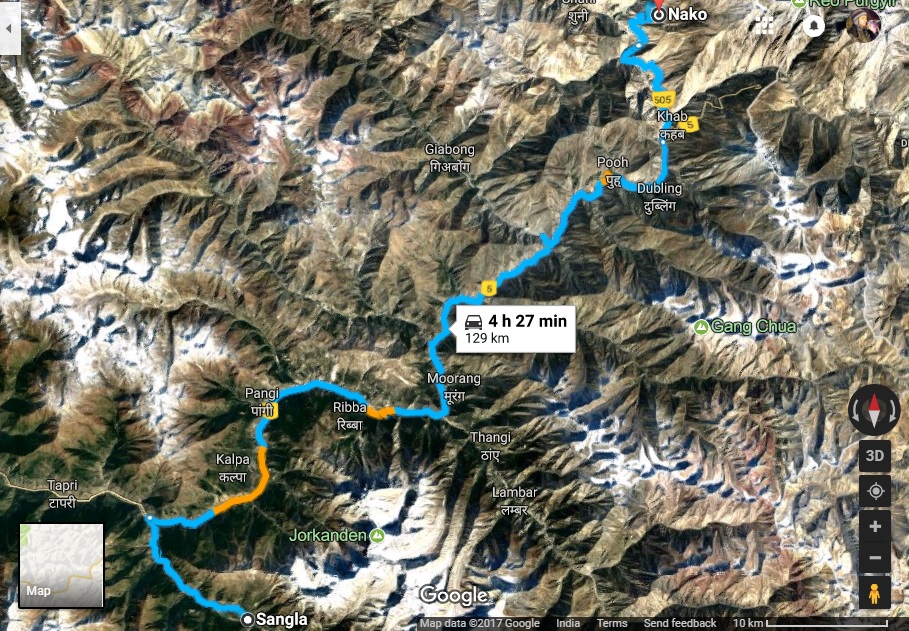
In that darkness we lost the view of the confluence of the Sutlej and Spiti river at Khab. You get very close to India China border at Khab. Thankfully just at the diversion to Nako village we got a room for the night stay. Village is somewhat off the road to the right side when going towards Kaza from Kinnaur, and we kept this in mind because we could have missed it in the dark. We ate dinner and slept hoping for a bright morning next day.
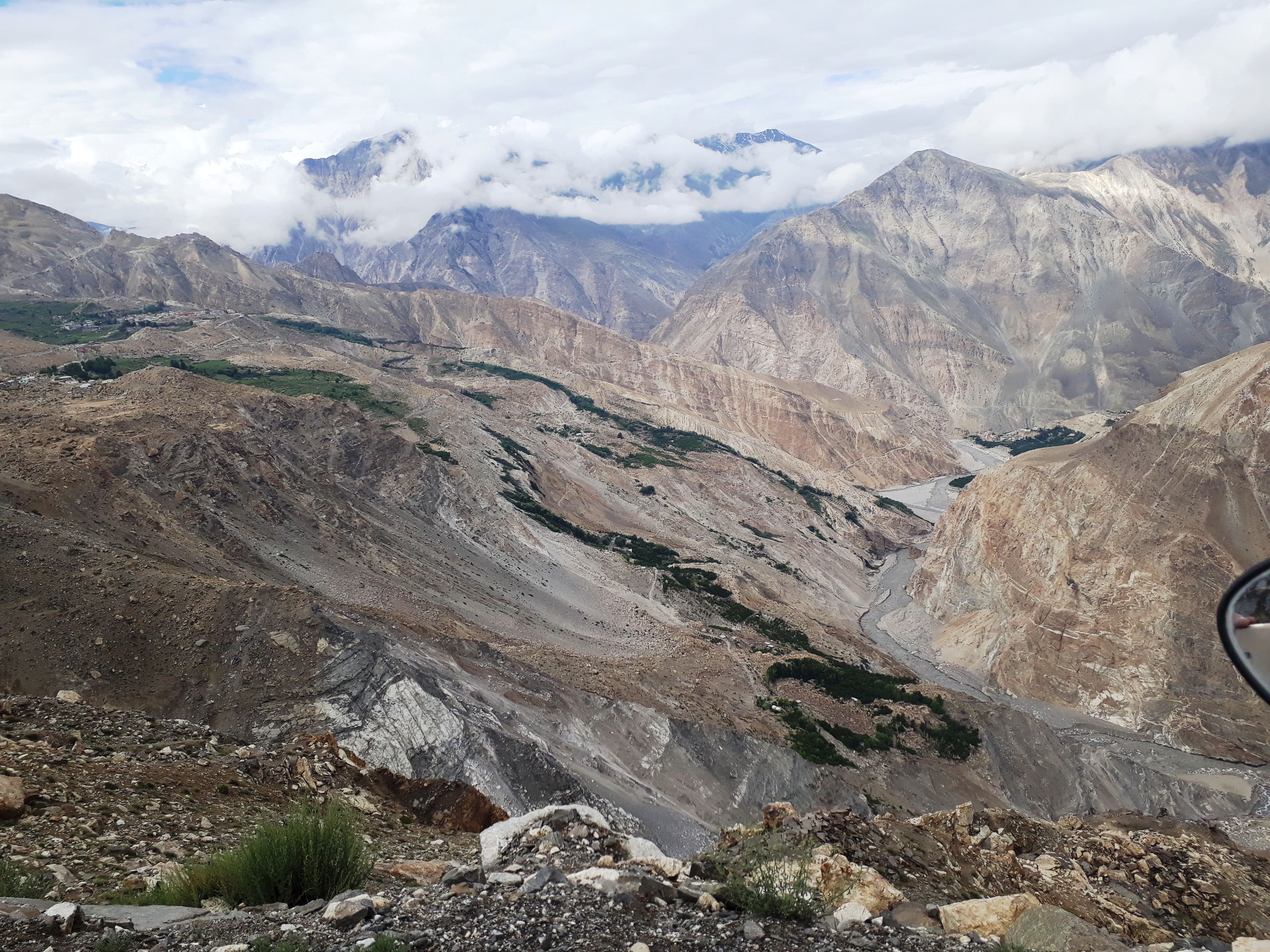
(The tinge of group of white on left, are houses of Nako village, and somewhere in the back in those deep valleys is the confluence point of Sutlej and Spiti river)

(The tinge of group of white on left, are houses of Nako village, and somewhere in the back in those deep valleys is the confluence point of Sutlej and Spiti river)
Nako Village
Nako village serves two things, one is the beauty of village and a lake in the mid of the village, and perhaps a good halting point between Kaza and Kinnaur. The morning was shadowed with clouds.
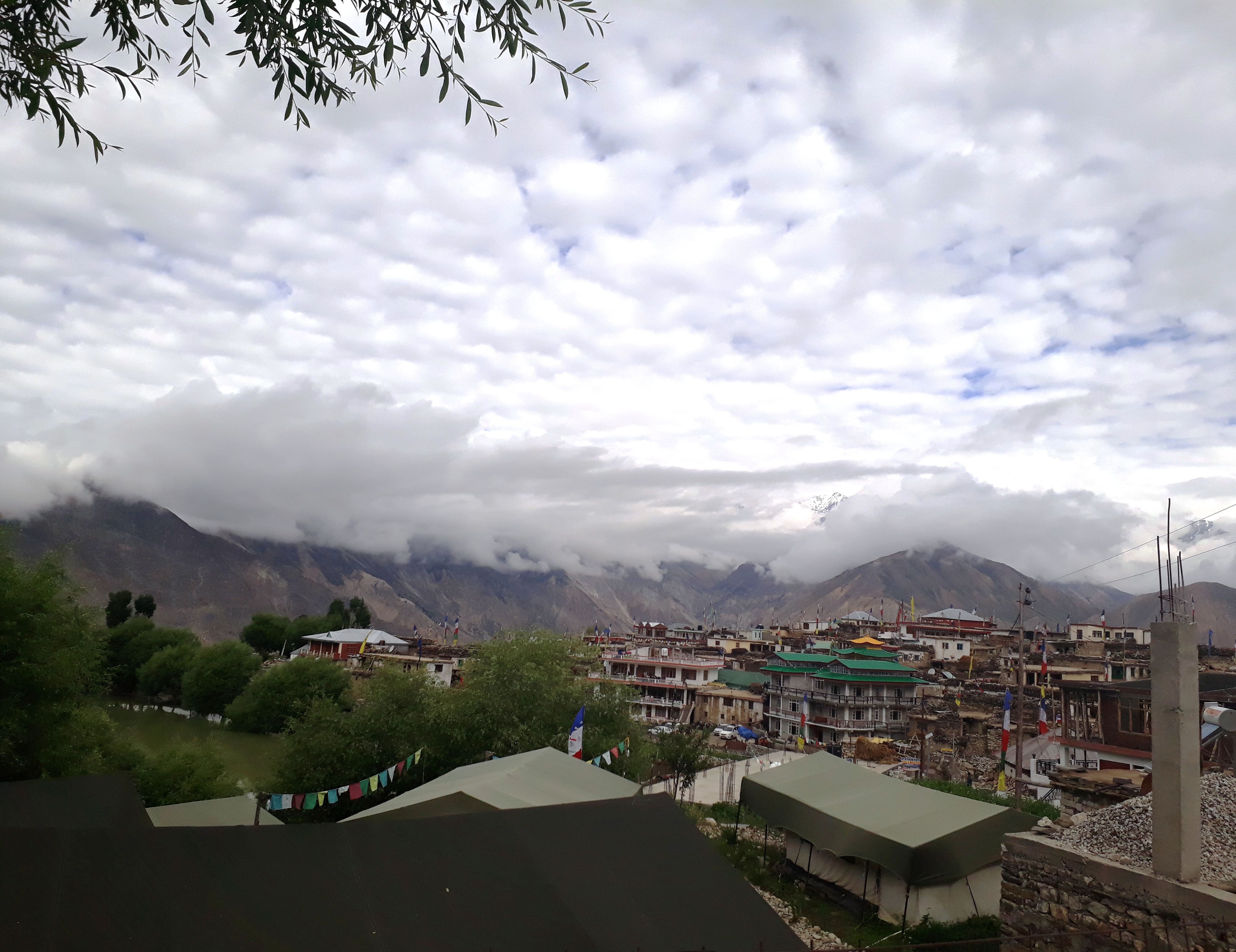
(Nako village, July 2017)
We roamed on our bikes, first reached the monastery hoping that lake was at this part of village, and then with asking a local, we reached the lake. Lake was nothing much of a spectacle, it sized comparable with that of a pond. The water was still and green probably due to not much of an outlet.
Given to this still lake water, there are number of trees that circle the lake. Given the same reason, the village even with an elevation of about 3600 metres has got few green fields to grow some vegetables. Else in this part of the world you would see the greenery only at the village very close to the river.
Given to this still lake water, there are number of trees that circle the lake. Given the same reason, the village even with an elevation of about 3600 metres has got few green fields to grow some vegetables. Else in this part of the world you would see the greenery only at the village very close to the river.
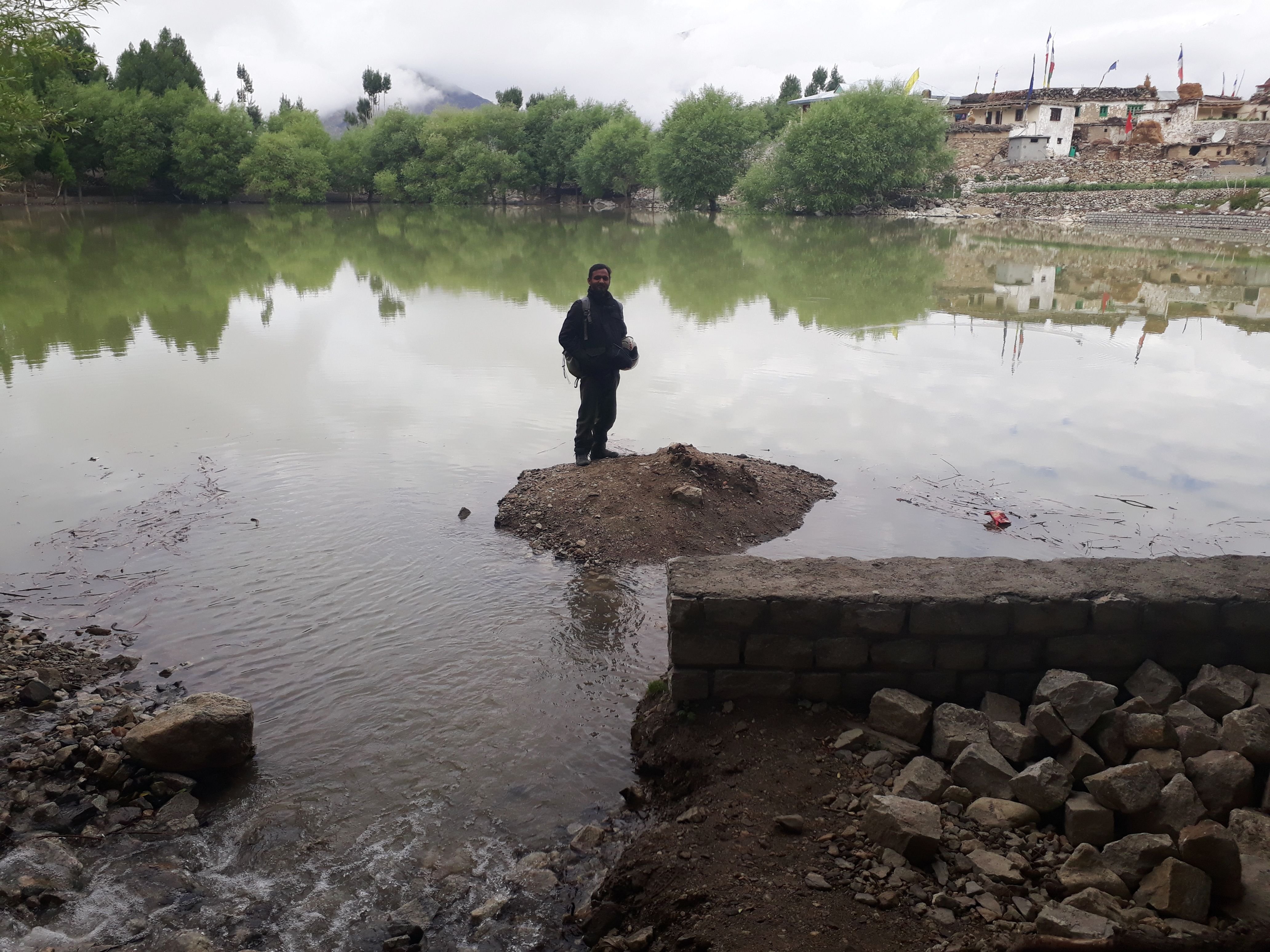
(this is how the lake looks from a close view)
One gets a whole view of the village and lake from a higher vantage point at a road that ends just few hundred metres from the village. Somehow I would know this only after coming back from the place, when I searched google images.
Nako village to Tabo
Road is in very good condition with few stretches of dirt road. Just as we leave Nako village, roads descends back abruptly with number of hairpin bends to get closer with the Spiti river.
From there onwards it runs parallel with the river throughout this journey.
You will experience a complete solitude and stillness(except Spiti water) at this place. A number of formations along the mountain ridges and on its slopes make the whole view just awesome.
You will experience a complete solitude and stillness(except Spiti water) at this place. A number of formations along the mountain ridges and on its slopes make the whole view just awesome.
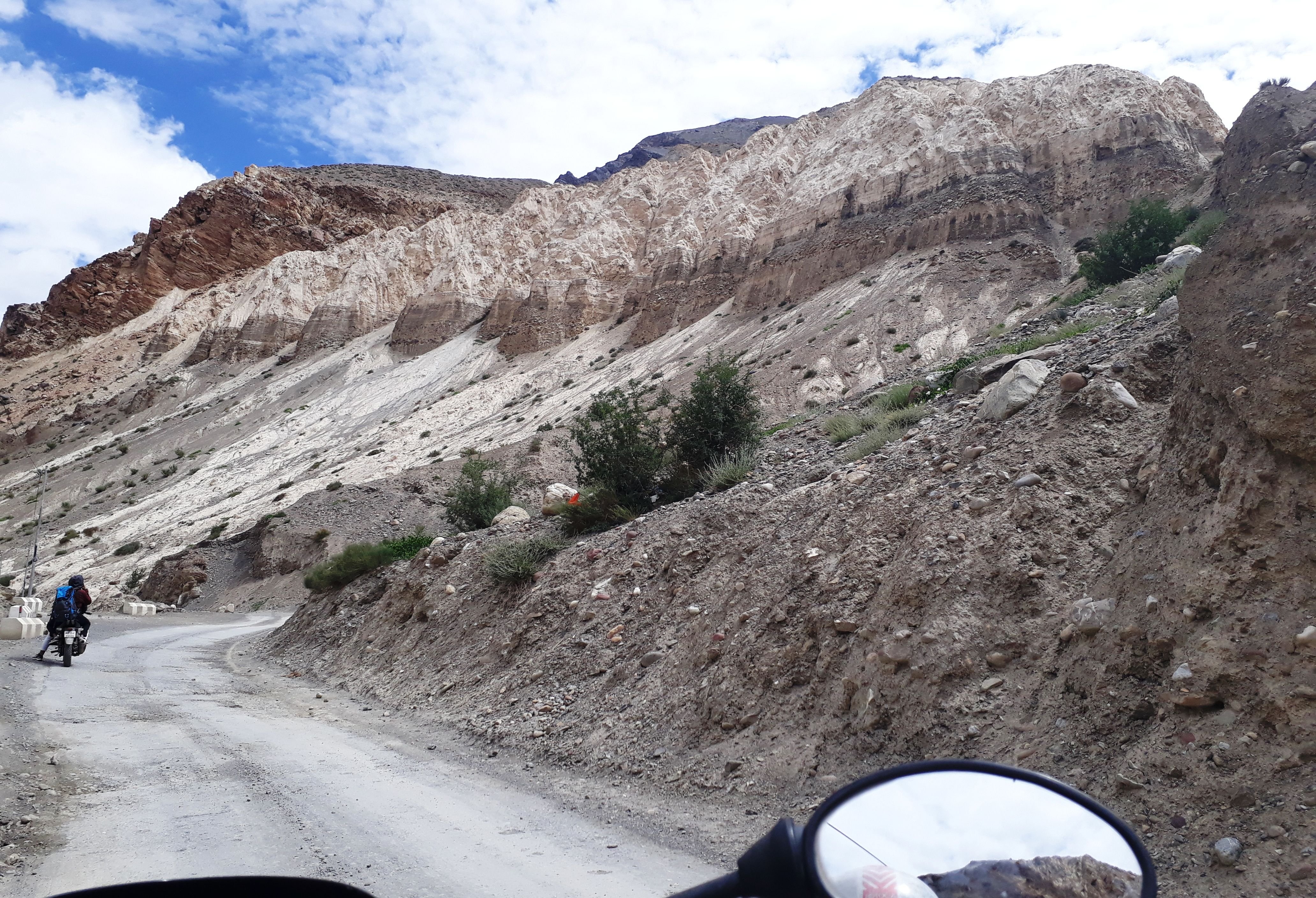
(Look at that.. soil formation on right)
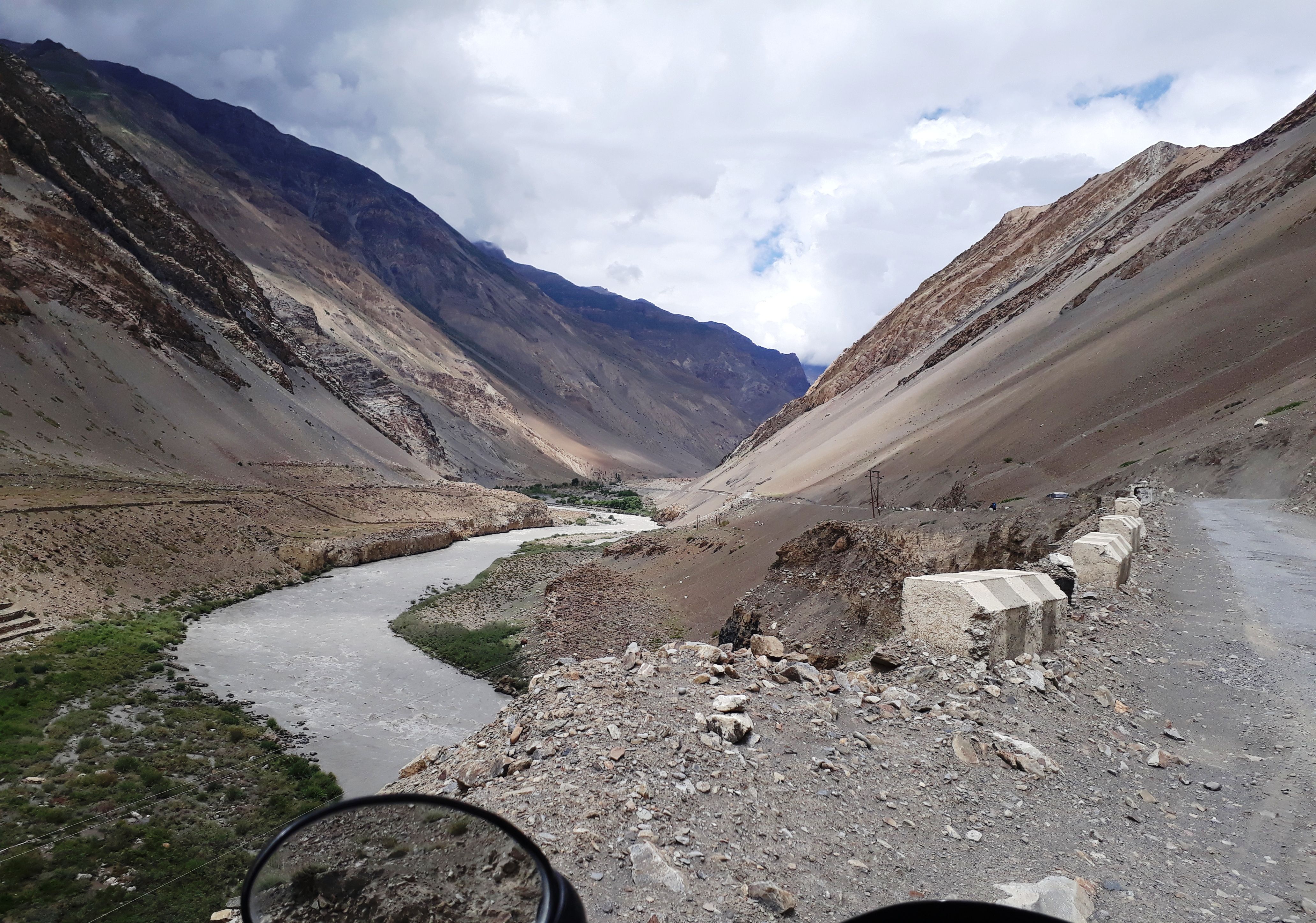
(Spiti valley)
We kept riding like this for this 60 kilometers stretch and in noon at around 11:30 AM, we reached Tabo.
Tabo
You see this big informatory board, and below it is a diversion to left that takes you to a small market of Tabo.
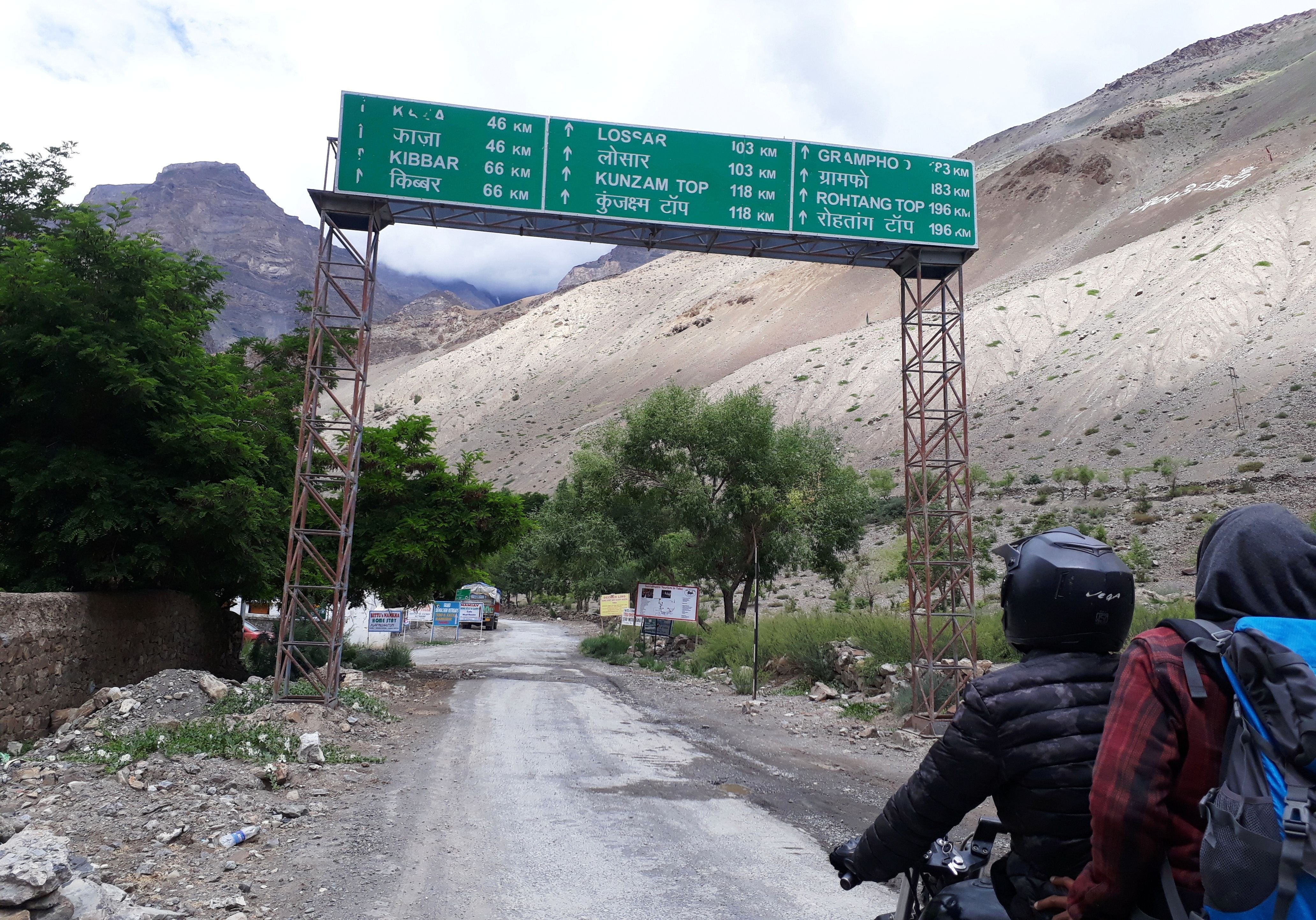
There is food facility, ATM and the famous age old Tabo Monastery. The description of the Monastery is given in the image. The monastery is dedicated to main four mythical deities of Tibetan Buddhism. I tried to ask about the deities from a couple visiting the insides, and they explained that the four deities are similar to the three main deities Brahma, Vishnu and Mahesh of Hindu religion. Maybe this all was inspired from the Hindu puranas only, who knows! The photography is not allowed inside monastery, so I clicked the outside only.
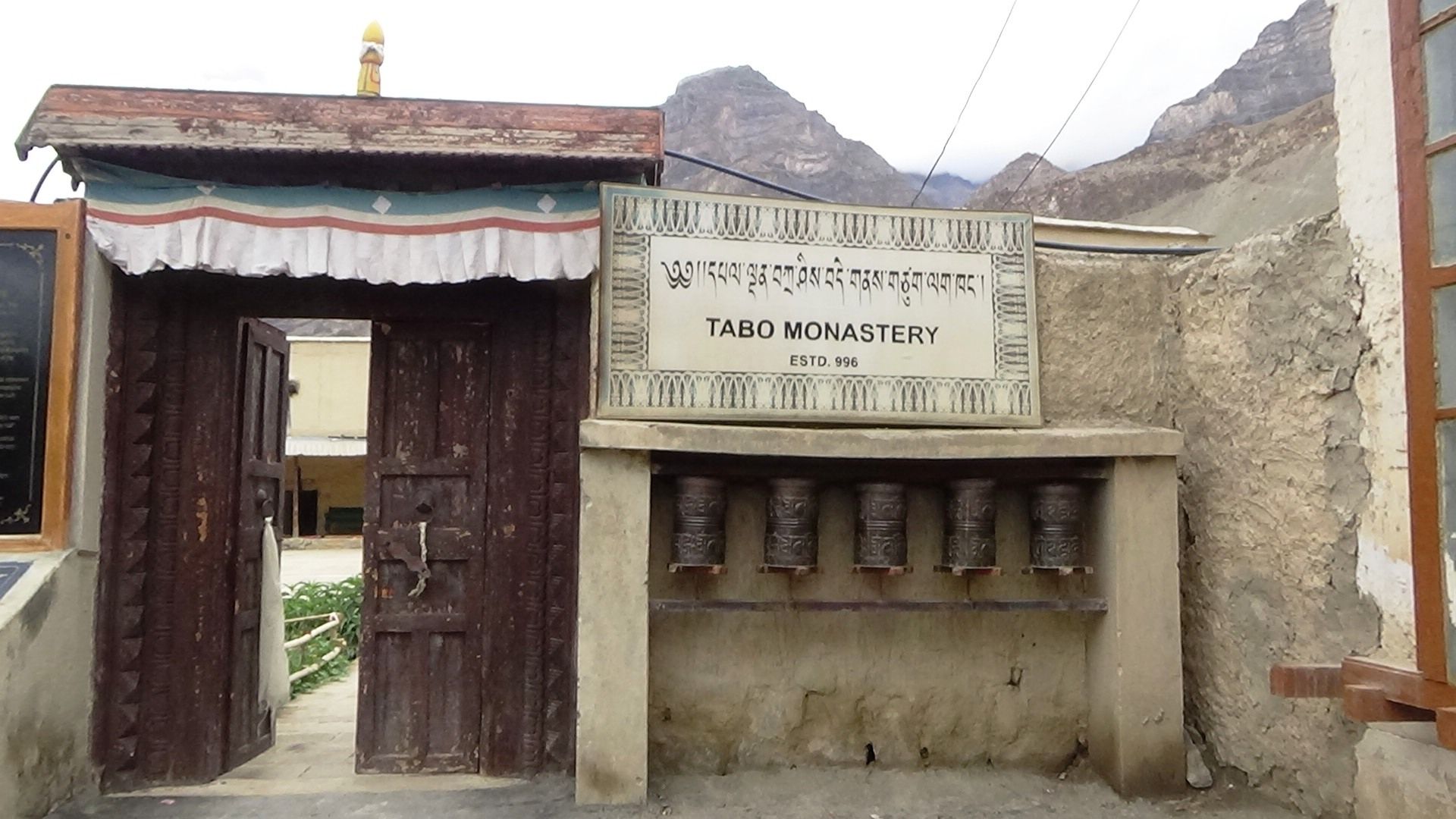
(Gate of Tabo monastery)
Read in the image below for the history of the Tabo monastery. Clicked at the entrance to the monastery.
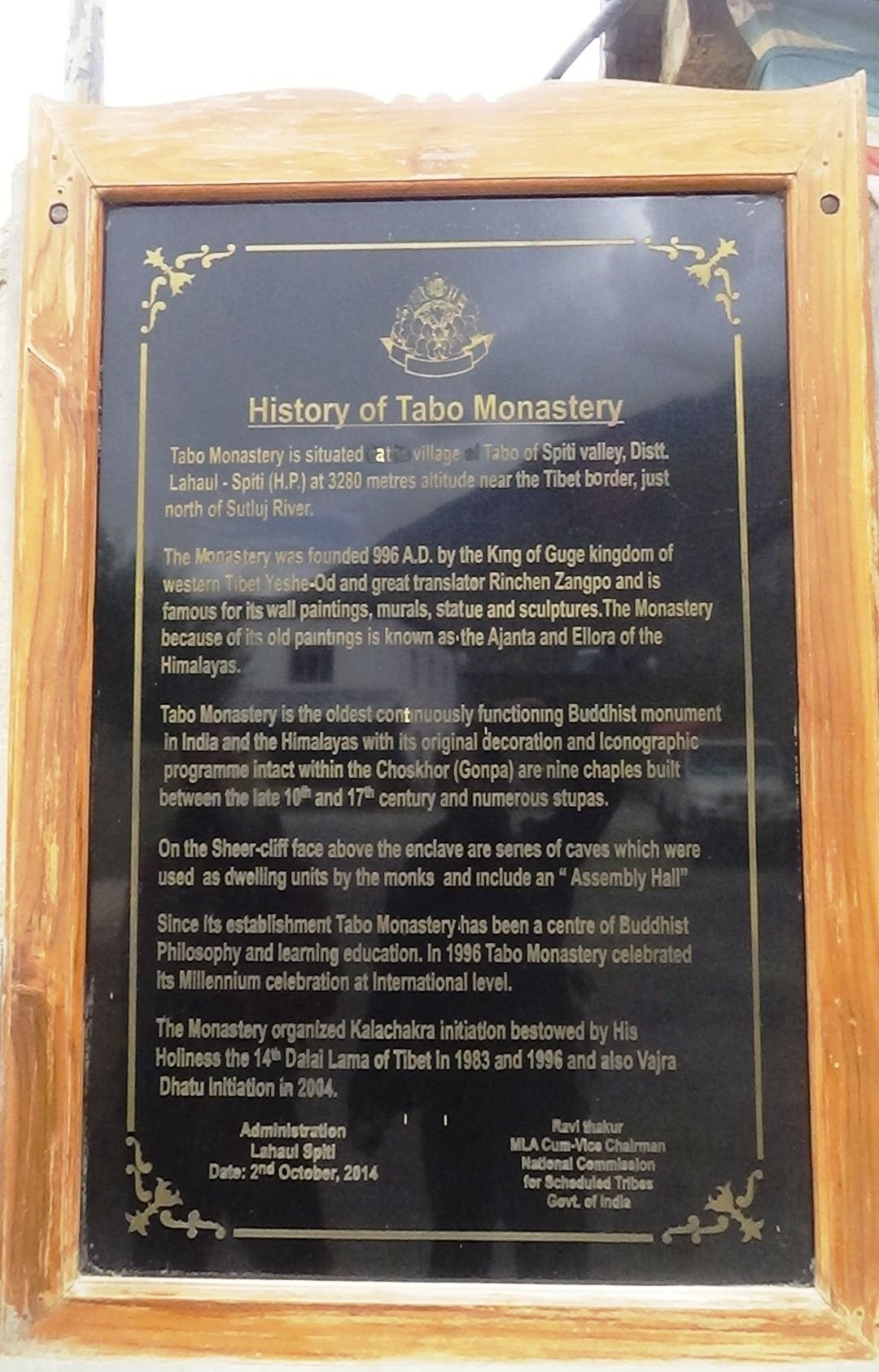
(History of Tabo Monastery)
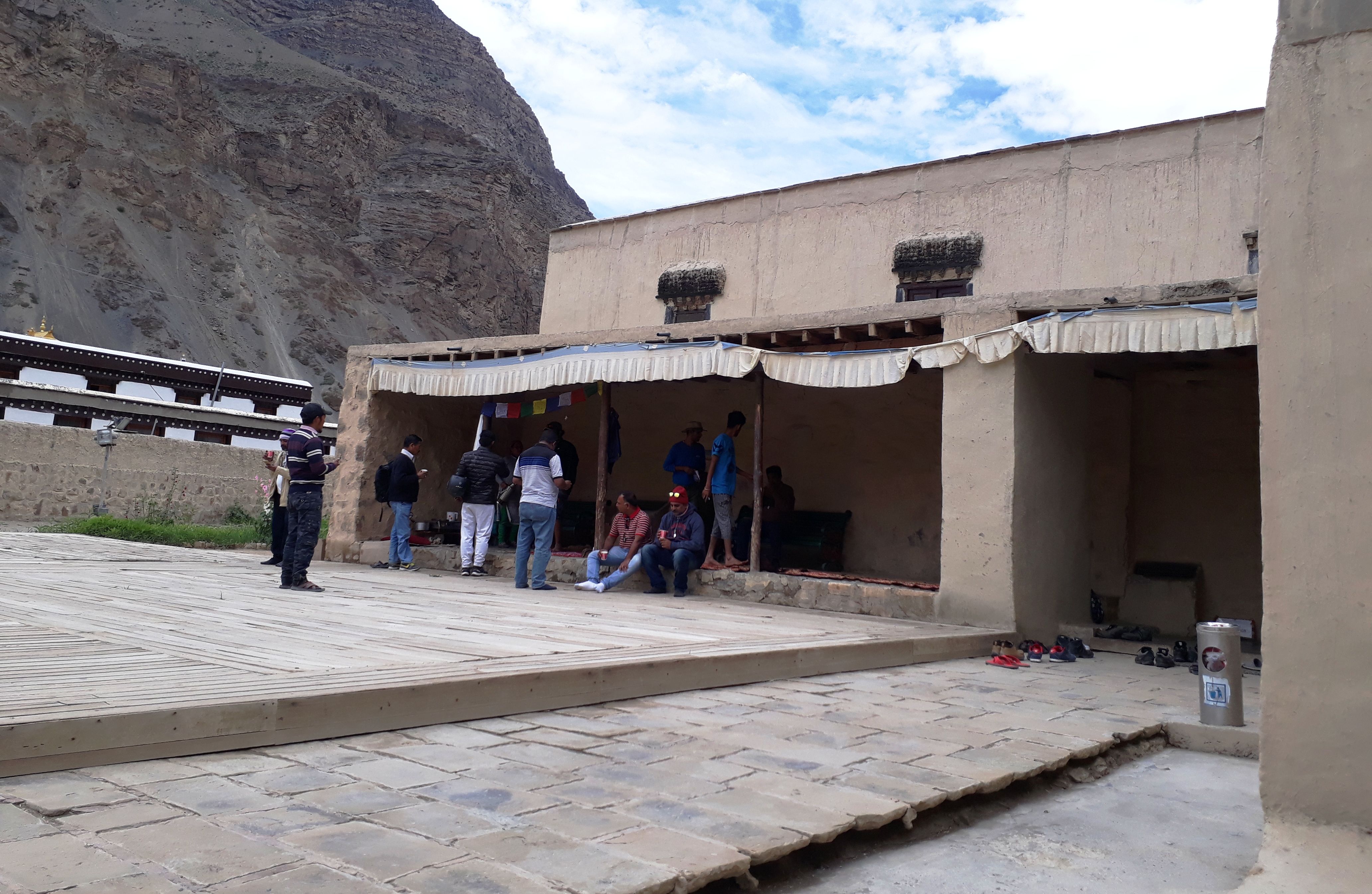
(Free cup of tea was being offered in the varandah of the monastery, yet I didn't like the taste much)
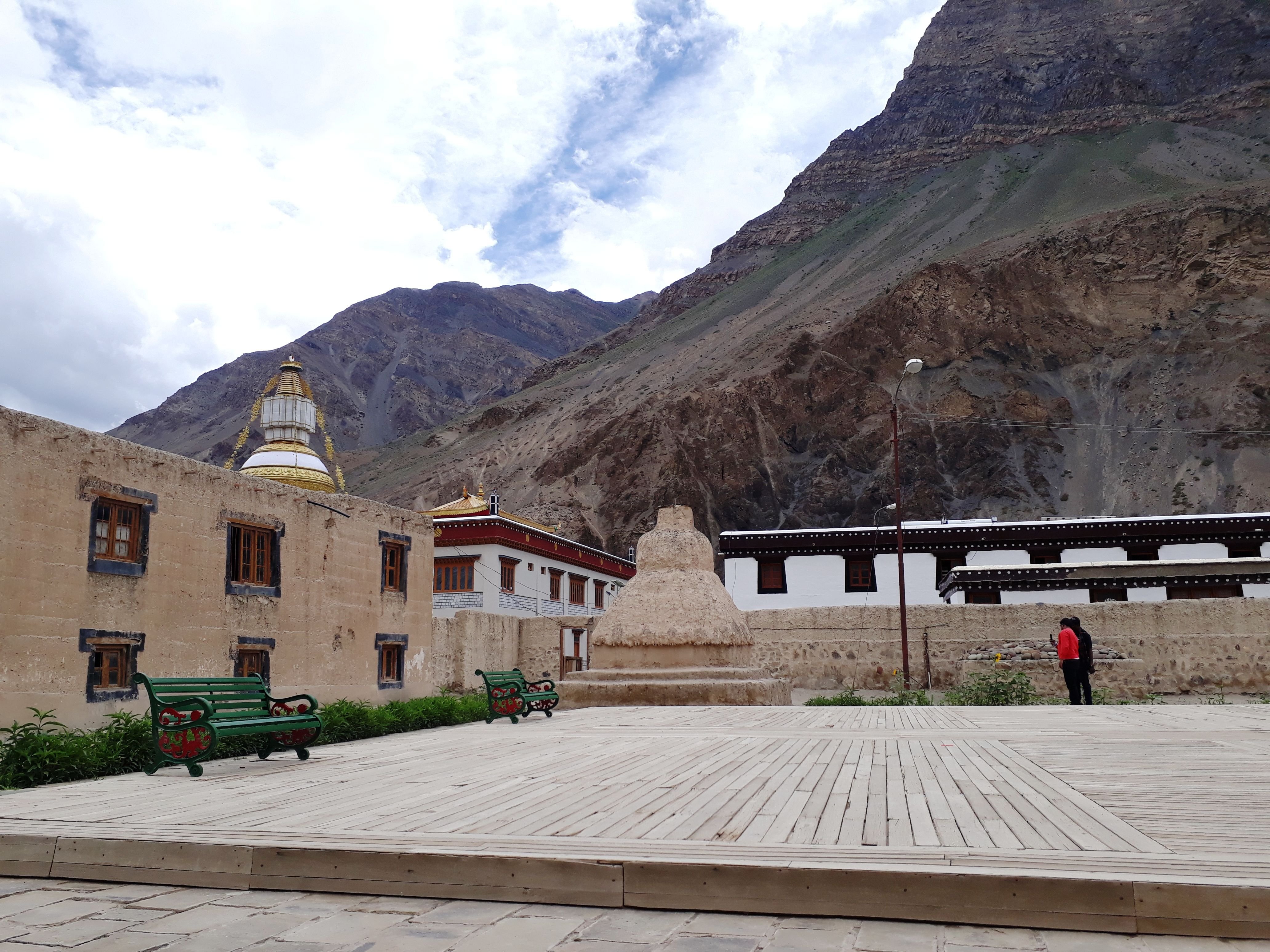
Soon a guide of the monastery voluntarily joined us and took us to another chamber where a big statue of half standing (just about to rise) Buddha was kept under the roof. He represented the future incarnation of the Buddha. Then he told us about the stupas made of mud and perhaps stone beneath the layers, which were the monuments created to memorate there influential gurus from past.
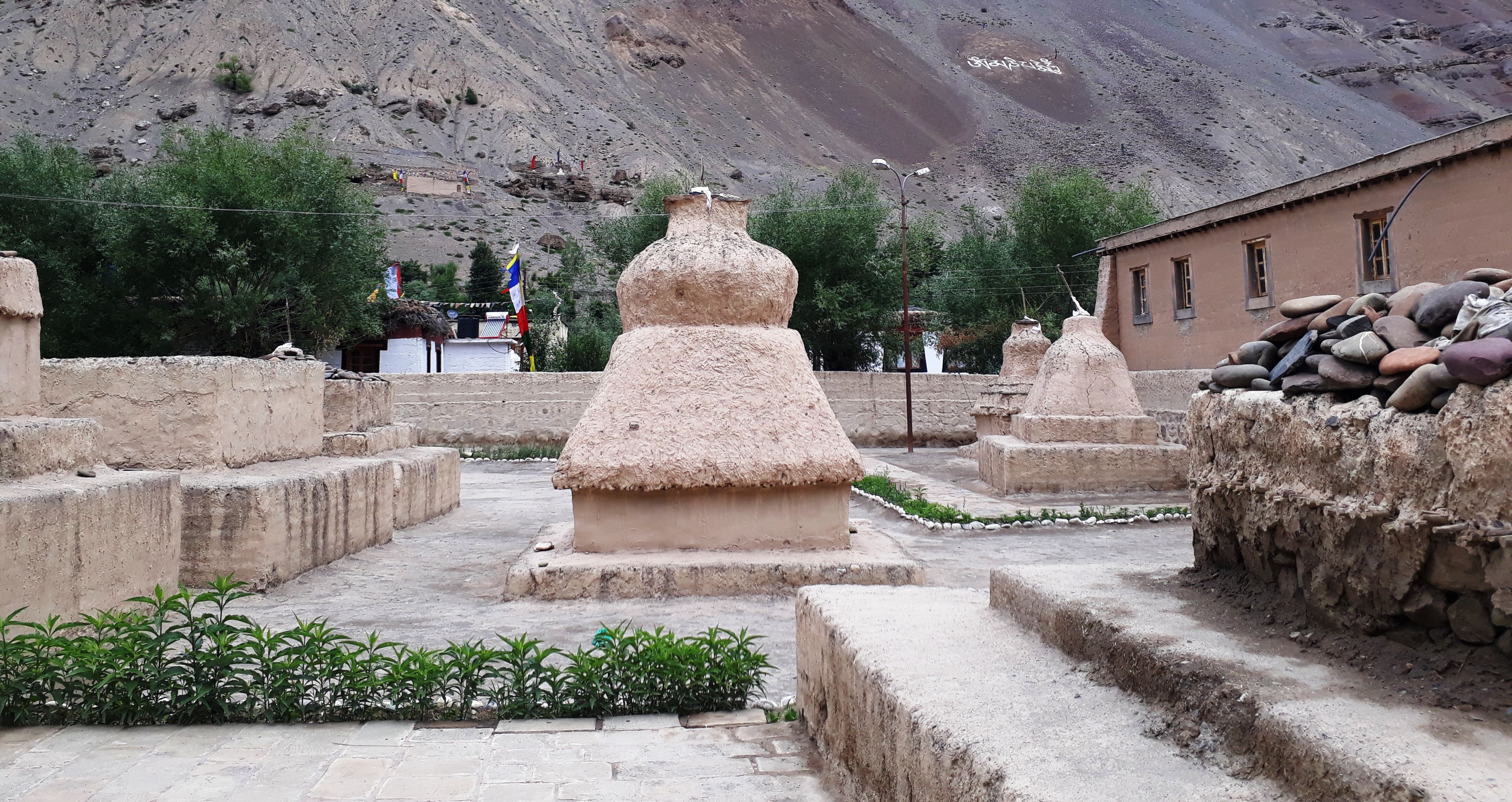
(Stupas - monuments for the past gurus)
Our Tabo visit ended in a local shop run by a tibetan woman, who offered the small artifacts at somewhat higher prices. We could tell because she offered a thread with a plastic ring with the inscribed sanskrit letter 'Aum' at 100 rupees. In our local markets at temple, one can get such locket for 20 rupees. I checked a hat, and clicked(See the first image at top) myself to check the wear up.
We also withdrew some cash from SBI ATM there. At around 1:00PM we started towards Dhankhar Monastery.
In the next post, I shall cover our visit to Dhankhar, Kaza, Kibber and if the post length doesn't become too much Langjha and Komik as well.
Thanks for the kind visit.
No comments:
Post a Comment